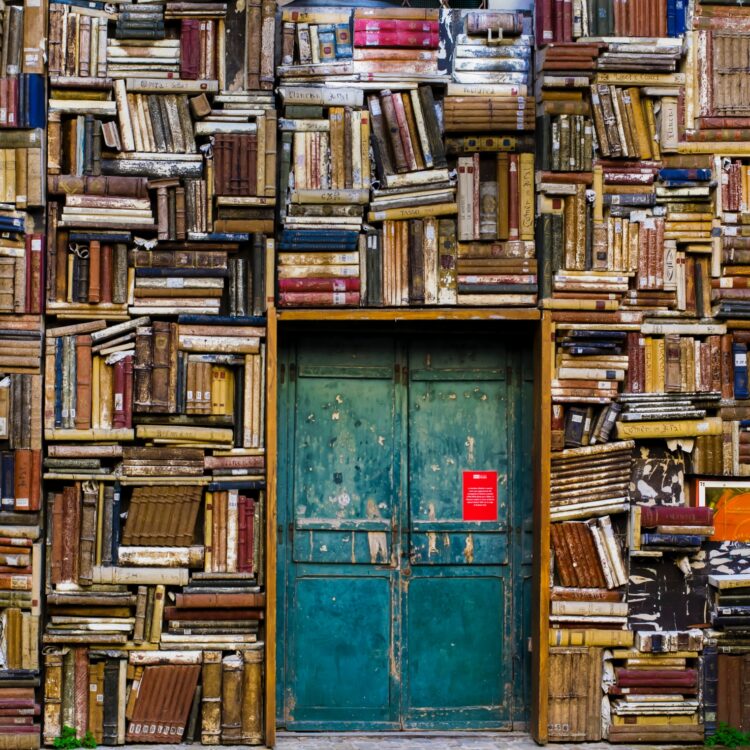
The INCLUDE team’s reading list: November 2021
About the reading list
One of INCLUDE’s core beliefs is that so much knowledge already exists, it just needs guiding to the right places and the right people in order to reach its full impact for policy and, ultimately, for development. Whether you are seeking information to guide policy, embarking upon a piece of research, or simply interested in broadening your knowledge and staying updated on inclusive development in Africa, we hope this source can be a good starting point.
- Dashboard of social protection responses to COVID-19 in the Global South. The IPC-IG and partners have created an online summary and tool for visualising social protection responses to the pandemic in Africa and the Middle East, Asia Pacific and Latin America and the Caribbean. Results can be filtered by country, region and sub-region; country income group; fragile and conflict-affected status; social protection component (assistance, insurance, labour market); target group (formal and informal); and financing source (public, private, international). Different graphs and ways of displaying indicator data help to quickly understand the main trends.
- 2021 Social Policy in Africa Conference – From 22-24 November, the biennial conference was held at the College of Graduate Studies, University of South Africa. The conference has been co-sponsored by the South African Research Chair in Social Policy, the Council for the Development of Social Science Research in Africa (CODESRIA), and the United Nations Research Institute for Social Development (UNRISD). The 2021 edition of the conference is the third in the series (following from the 2017 and 2019 conferences). The edition of the conference is under the theme Development, Democracy, and Social Policy: Remembering Thandika Mkandawire to honour the memory and intellectual legacy of Thandika, whose vision of social policy continues to inspire our works.
- Investing in girls’ education? Top 3 lessons from the evidence – At this year’s Global Education Summit, GPE partner countries and the global community pledged to invest in girls’ access to education. This blog by the GPE highlights 3 key lessons donors and governments should keep in mind when thinking about what interventions to invest in to keep girls in school: 1. Interventions that reduce the costs of education are particularly effective at increasing girls’ enrolment; 2. Changing girls’ and parents’ perceptions about the benefits of education and improving aspirations can lead to greater investments in education; 3. More research is needed to unpack gender-specific barriers to education.
- A Capabilities Response to Remote Learning During the COVID-19 pandemic in Malawi – Link Education International leads a consortium of organisations delivering the TEAM Girl Malawi project, which provides complementary basic education (CBE) to out-of-school adolescents. TEAM Girl Malawi carried out a rapid assessment with 12% (287) of the project participants who had a working phone, to assess how their needs and challenges have changed due to the pandemic as well as determining the most appropriate learning support. In response, the project used a capability framework to develop three key innovations to support inclusion, equity and quality while learning centres were closed.
- Learning at scale interim report – The Learning at Scale study was designed to identify existing early grade reading programs with demonstrated impact on basic skills at scale and to conduct in-depth investigations of these programs to determine what makes them successful. The study is led by RTI International, as part of the Center for Global Development (CGD) education research consortium, funded by the Bill and Melinda Gates Foundation. This interim report by SHARED highlights the preliminary findings across all eight programs, as well as quantitative and qualitative findings from primary research for select programs.
- Paying for education and labor market outcomes in a changed world: reflections from GSG Summit 2021– Last month at the annual GSG Global Impact Summit, leaders in the impact investing sector from across the globe gathered to discuss entrenched and intractable social and environmental challenges that have been aggravated by the pandemic, such as the loss of human capital and productivity. Two sessions focused on using innovative financing to harness private investment to enhance delivery and strengthen government and service provider capacity. This blog highlights the common themes emerging from the discussions.
- Jobs for rural youth: the role of local food economies – Young people in rural areas face the double challenge of age-specific vulnerabilities and underdevelopment of rural areas. While agriculture absorbs the majority of rural workers in developing countries, low pay and poor working conditions make it difficult to sustain rural livelihoods. Growing populations, urbanisation and rising incomes of the working class are increasing demand for more diverse and higher value added agricultural and food products in Africa. This demand will create a need for off-farm labour, especially in agribusinesses, which tends to be better paid and located in rural areas and secondary towns. This series of monographs from the OECD Development Centre covers examines these trends.
- It’s important that young people have a seat at the table, not just to be heard, but to be listened to’ – To give young people a voice in its policy processes, the Ministry of Foreign Affairs, in collaboration with the National Youth Council, has set up the Youth Advisory Committee. The committee aims to include young people’s views, concerns and creative ideas in shaping, implementing and evaluating development policy. Four committee members – Kevin Eustatia from the Netherlands, Salim Menaceur from Algeria, Daisy Kandole from Uganda and Grace Aguil Garang from South Sudan – talked about meaningful youth participation during the event ‘One Year Youth at Heart’.
- African Union to Select the Second Cohort of African Youth Ambassadors for Peace – From 9-12 November 2021, the Political Affairs, Peace and Security (PAPS) Department of the African Union (AU) Commission facilitated the selection of the second cohort of African Youth Ambassadors for Peace (AYAPs) as part of celebrations to mark the Africa Youth Day. For three days, 15 finalists, 3 from each of Africa’s five sub-regions, underwent a rigorous screening process to test their knowledge on African governance, peace and security issues, life skills, and character. The AYAPs-elect, 1 per region, will subsequently be presented to the African Union Peace and Security Council and will officially assume office in February 2022, and continue to work very closely in the implementation of their mandate, with the Youth for Peace Africa Program within the PAPS Department of the AU Commission.
- IATF2021: Driving Intra-African Trade Through Youth Participation – Africa has a growing and predominantly young population – the average age in Africa is just under 20 – and these factors grow consumer demand and illustrate the urgent need to expand employment opportunities rapidly, creating real synergies with the objectives of AfCFTA. This panel discussion examines the topic Driving Intra-African Trade Through Youth Participation.
- The COVID-19 pandemic and structural transformation in Africa: evidence for action – This study by the German Development Institute analyses how strengths and weaknesses of economic, societal, political and environmental structures played out during the Covid-19 crisis in Africa since March 2020. Its main aim is to improve evidence on the direct and indirect effects of the pandemic on African countries and, based on that evidence, identify policy implications and formulate recommendations. Amongst many other findings, the analysis shows the important role of social cohesion for coping with the pandemic and for sustainable development on the longer run.
- Africa’s green manufacturing crossroads: Choices for a low-carbon industrial future – In Africa, the decarbonization of the manufacturing sector and economic growth and industrialization can go hand in hand; the choices the continent makes now will be critical for its future success and prosperity. This Article by McKinsey Africa examines the potential costs and likely benefits and opportunities across the manufacturing value chain and offers five areas for possible action to help the continent reach net zero by 2050.
- Africa and China: Development Cooperation for Structural Transformation – After over 70 years of development since World War II, most emerging markets and developing countries still lag behind advanced industrial countries with large income gaps. A forthcoming paper by Justin Lin and Yan Wang attempts to approach the question, “why is catching up economically so difficult?”, through the lens of structural transformation. The paper starts by looking at China’s experience in structural transformation, then moves on to review Africa’s achievements and challenges in structural transformation. Using the analytical framework of New Structural Economics (NSE), the authors attempt to first identify African countries’ bottlenecks for structural transformation, and then examine if China-financed, completed projects have addressed these bottlenecks.
- What stimulates the demand for grid-based electrification in low-and middle-income countries? – This recent paper by 3ie presents results from a rapid evidence assessment that synthesizes available, high-quality impact evaluations on interventions stimulating demand for electric grid connections in low- and middle-income countries. The authors also examine the effects of electrification on well-being and identify barriers to adopting electrification. All four studies found that interventions that addressed affordability of electrification were successful in improving electrification rates. Three of the studies found that socioeconomic status was associated with grid connections, and that this in turn was linked to income growth. Electrification was also found to be related to increased female participation in income-generating activities. School-aged children living in households that connected to the grid were more likely to spend their time studying because they could study at night.
- Pandemic-Fueled Digitization: Who Remains Excluded? – As global lockdowns continue to compel digitization of diverse services, unconnected populations will find it increasingly challenging to survive the ‘new normal’ of our increasingly digital world. From education and healthcare to retail and finance, digital has been promoted to the preferred form of distribution and payment, forcing essential goods and services out of reach for the digitally excluded. Experts and governments pontificate that digital finance can democratize access to financial services, but little research has been done to assure that while some cross the digital divide, vulnerable populations those without the necessary resources do not fall further behind. Mondato looks at which new tools and approaches are required to appropriately address those excluded by an increasingly more digital world.
- Changes in the structure of global aid 2000-2019 – The Brookings Institute summarises the new World Bank Paper, ‘A Changing Landscape: Trends in Official Financial Flows and the Aid Architecture,” which analyses trends in the global aid architecture between 2000 and 2019. The main findings include: 1) Financial flows to developing countries have grown steadily over the last decade, largely thanks to private sector finance; 2) Among public lenders, BRICS countries (Brazil, Russia, India, China, and South Africa) provided significant volumes of loan financing; 3) The volume of funding that donors have not allocated to specific recipient countries almost quadrupled over the past two decades, reaching $70 billion in 2019—more than one-fifth of official finance to developing countries; 4) Between 2000 and 2019, the number of countries and multilateral institutions providing official finance around the world grew from 47 to 70; 5) Development activities continue to remain highly fragmented with the average size of official loans or grants reducing by one-third in value over the last 20 years.
- The long and winding road of evidence adoption – What does bridging the gap between evidence, policy and practice actually look like? How do you meet policymakers where they are, providing timely advice on their priorities without selling them a solution in a box that will self-destruct when jammed into a completely different context? How can we stand on the shoulders of academic and implementation giants, drawing on global evidence and implementation best practices, while still having our feet firmly planted in the context we are trying to support? Ashleigh Morrell from J-PAL discusses 3 approaches that have been critical to evidence adoption and contributing to improved lives. 1) Use randomised evaluations as a piece of the puzzle, not the whole picture. 2) Get the implementation details right. 3) Stay a long-term knowledge partner.
We encourage anyone from our platform, close network and wider audience to get in touch with recommendations for this reading list and to help us with our goal of sharing and disseminating knowledge. Please mail your suggestions to includeplatform.net with the subject “Contribution to INCLUDE reading list“.



